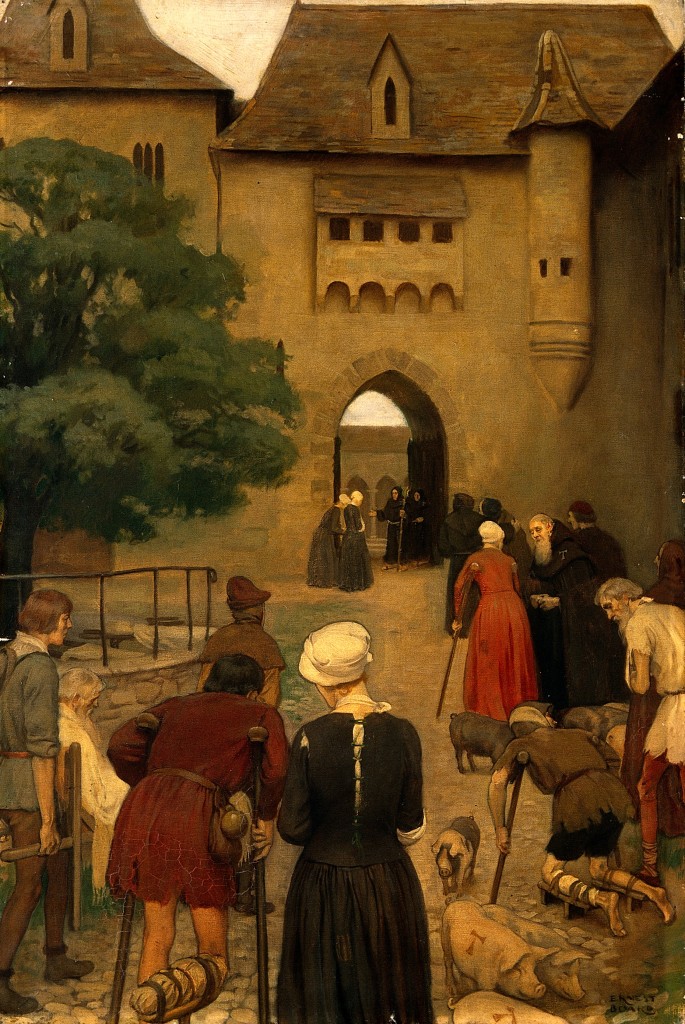Outbreaks of the mysterious illness Saint Anthony’s Fire – frequent in the Middle Ages – must have been terrifying. The disease afflicted sufferers with sores, gangrene and, to top it all off, horrible hallucinations. People in the grip of the disease often went mad and sometimes physicians had no choice but the amputation of severely diseased limbs. All of course, without painkillers.

Open source: Wellcome Library, London.
With no cures or explanations for the cause of this mysterious illness, the finger was firmly pointed at bewitchment.
In the absence of gossip columns, stories about the horrors suffered by victims were most likely spread by word of mouth. In The Infidel’s Garden, Gerda, the family cook, with considerable enthusiasm and malicious embellishment, describes an afflicted monk.
“The monk told Herr Schoorel he’d been visited by beautiful, black-haired young woman who mounted him like a whore! Once he was inside her she turned into a blue, bat-winged succubus and swived him until he spilled his seed!”
Some wonder if Hieronymous Bosch suffered from this disease when he painted his most imaginative works. Sorry, but I find it hard to believe that an illness with such ghastly symptoms could have aided his creativity. It’s more likely he was, as depicted in The infidel’s Garden, an eccentric, slightly Asperger-ish character obsessed with his work.
We now know Saint Anthony’s Fire, or ergotism, is caused by eating bread contaminated with the fungus Claviceps purpurea which is commonly found on grains including wheat and rye.

I suspect back then, even if tainted bread had been identified as the source, with no understanding of microscopic pathogens, those in charge (ie: the clergy) would still have sought out a human culprit ( most likely a woman) to blame for the outbreaks.
Click on the link-star for more information:

